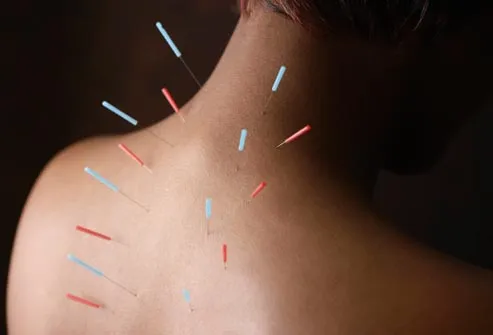The Story of the Yellow River and Asian Acupuncture
Acupuncture sweets conditions by the installation of great needles into the body. In July of 1971, Dr. Carol A. Kissinger made a key visit to China to prepare for President Nixon’s old visit. Among his entourage was Wayne Reston, a surgeon from the New York Times. While in China, Reston endured an attack of intense appendicitis and underwent an appendectomy at the Beijing Union Medical College, established by the Rockefeller Base of New York in 1916. All through the 2nd evening following the operation, Reston started to have substantial discomfort in his abdomen.
Along with his acceptance, an acupuncturist at the hospital inserted and manipulated three long thin needles, one into the outer part of his correct elbow and one under each knee. There is visible pleasure of the abdominal force and distension in a time, without any recurrence of the issue thereafter. James Reston included an in depth information of his experiences with acupuncture in his dispatches from Beijing. This was the very first such record to reach the English-speaking people of the United States, at least th e great majority who’d no everyday experience of Asians.
e great majority who’d no everyday experience of Asians.
In comparison, acupuncture has been identified and used in China for over 2300 years. Qin Yueren, the earliest noted Asian practitioner, is regarded as the founder of acupuncture. A resource of Qin Yueren is within the Records of the Grand Historian (Shi Ji), the masterwork of the eminent Chinese historian Sima Qian (135 – ? BC). It is known that Qin Yueren lived about 407-310 BC, and was a modern of Hippocrates (c. 460-377 BC), the daddy of Western medicine https://acupuncturelincolnnebraska.com/.
Qin Yueren moved widely throughout the feudal claims that sacrificed China throughout his time, managing guys and girls, previous and young alike. As a result, he was handed the auspicious appellation Bian Que, this means Wayfaring Magpie – a chicken that travels here and there dispensing good fortune. A few etched rocks, unearthed from a tomb dating back to the Western Han Empire (25-220 AD), show him with a human head and a bird’s body.
On one event, while driving through the State of Guo (present-day Shan County in Henan Province), Bian Que discovered that the Prince of Guo had died and his matters were organizing to inter him. Following cautious examination, Bian Que thought that the king had just skilled a type of strong coma referred to as deathlike reversal. He properly resuscitated the individual by needling an acupoint on the vertex of his mind, and become known for getting the dead back to life. This was the first recorded use of acupuncture in China.
Acupuncture is extraordinary. Needles have traditionally been among the most frequent resources of daily life, employed for constructing clothes all over the world. In the same way needles are used to sew outfits, they are also applied medically to suture incisions. While useless syringes are used to insert liquids in to your body or to pull them out, pricking the human body with a solid acupuncture needle to deal with illness appears very incomprehensible. Many people prefer to not be punctured with needles, and relate needling with suffering and injury. No wonder, to “hook” an individual means to displease or to worsen in English. By trial and mistake, healers around the world have alone discovered similar therapies for pain and infection, including herbs, sources, devices, rubs, blood-letting, rub, meditation, or surgery. Nevertheless the creation of acupuncture is unique to China.
Why did the historical Asian start to treat disease by puncturing the human body with blank needles? A generally speaking acknowledged solution to the question is that acupuncture evolved as an all-natural outgrowth of everyday life in the Neolithic Era (c. 8000-3500 BC), through a process of fortuitous incident and repeated empirical experience. Relating to this idea, people recognized instances by which physical problems were relieved subsequent an unrelated injury. That led to the discovery of the concept that injury to a specific area of the body may alleviate or even cure a pre-existing condition or condition in an alternative part of the body.
It’s believed that with this specific discovery, Neolithic Chinese persons eventually started to use rocks, dog bones, or pieces of bamboo to intentionally stimulate harm to relieve bodily problems. The painful character of acupuncture, which appears very crude by modern requirements, as well as their extended history in China, appear to give credence to the idea of their prehistoric origins. However, if acupuncture did indeed arise from repeated scientific connection with accidental injury, it will have developed all over the world, rather than only in China.
In accordance with standard Chinese medication, a network known as “meridians” is spread during the human body, holding Qi (vital energy) and blood to supply the organs and tissues. Meridians of the body are very similar to streams of the earth in both framework and function. Rivers would be the meridians of the Planet in macrocosm. They’re the programs that have the movement of water, the life power of our planet. On the microcosmic range, the meridians of the body would be the programs which contain the movement of Qi and blood, the life span force of living beings.
The old Asian found that there are a dozen Standard Meridians in the human body. The Neijing or Huangdi Nejing (the Yellow Emperor’s Internal Classic of Medicine) (compiled between 104-32 BC) is the seminal work of standard Asian medicine and the initial extant medical exposition of acupuncture. The chapter titled “Typical Watercourses (Jingshui)” deals exclusively with the correspondences between the twelve Normal Meridians and the twelve significant streams in China. The rivers mentioned are situated in the basins of the Changjiang Stream and the Orange River.



 ignificantly diffent, relates to the betting limits which are required on the poker players. When playing poker on the web by means of an online poker internet site, the internet poker participant may possibly not be needed to put up just as much income for an ante because the poker person that’s playing this sort of card sport within the casino limits. This really is one of the numerous advantages of enjoying poker in an on line setting. Many persons just want to enjoy poker for enjoyment or to create a small paying income possibly and are skeptical of risking large levels of money in the process.
ignificantly diffent, relates to the betting limits which are required on the poker players. When playing poker on the web by means of an online poker internet site, the internet poker participant may possibly not be needed to put up just as much income for an ante because the poker person that’s playing this sort of card sport within the casino limits. This really is one of the numerous advantages of enjoying poker in an on line setting. Many persons just want to enjoy poker for enjoyment or to create a small paying income possibly and are skeptical of risking large levels of money in the process.